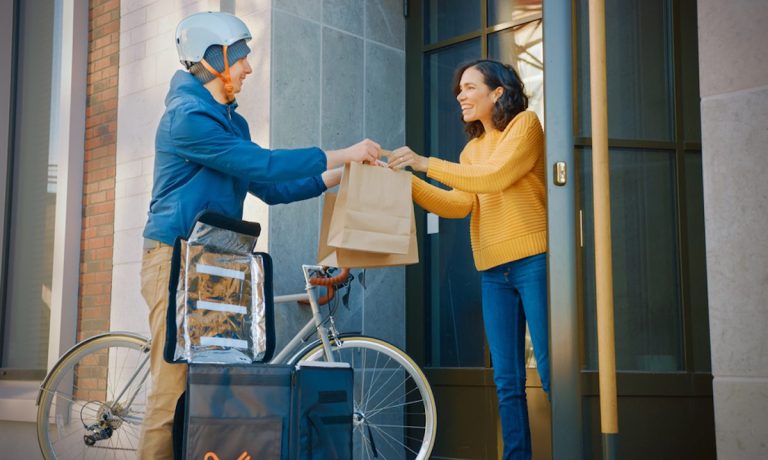
In fact, PYMNTS’ How We Eat Playbook, created in collaboration with Carat from Fiserv, found that consumers are now 31% more likely to buy meals to be eaten at home than they are to dine on-site, and 82% of restaurant customers plan to maintain their digital ordering habits even once the public’s jitters over the pandemic subside completely.
The challenges touch small independents and major chains alike, though the pain is more severe for the little folks.
Marti Lieberman, founder and owner of Mac Mart, a beloved Philadelphia mac-and-cheese shop that began as a food truck, recalled in an interview with PYMNTS that at the start of the pandemic, the chain would take delivery pre-orders days in advance, sticking to a strict schedule to drive the meals to customers’ homes. While that wasn’t sustainable over the long haul, it did inspire the company’s Market Mac heat-and-eat line.
“We don’t do suburb delivery anymore, simply because most people aren’t sitting at home, which is weird because we don’t have our lunch rush back yet,” Lieberman said. “We’re still on GoPuff. We’re still in the markets. We do still offer a lot of hot delivery with Uber Eats, Caviar, DoorDash, all of them, and I’d say that’s probably about 30% of our business.”
Thank You for Your Order
To keep consumers coming back to the store’s direct ordering channels, the company leverages its social media presence and devoted following. Ultimately, the heat-and-eat business has gone a long way toward helping the restaurant meet consumers’ food-at-home needs without bearing the cost of third-party hot food delivery. Lieberman noted that about 20% of sales are now catering or Market Mac orders.
It’s not unusual for aggregators to levy commissions as high as 30% for their services, including digital order-taking capabilities, delivery labor, and providing a marketplace where new customers can find restaurants. But even with these steep fees, most aggregators continue to operate at a loss. Uber Eats only this week (Nov. 11) announced its first-ever profitable quarter for delivery, and DoorDash is continuing to rack up losses. Meanwhile, restaurants are straining to afford their services, and consumers are growing increasingly frustrated with the high costs of the channel.
In an effort to keep restaurants from running to seek alternatives, delivery services are now unbundling their offerings to allow restaurants to choose which products are most relevant to them. On Wednesday (Nov. 10), DoorDash and Grubhub both announced features that make it easier for restaurants to fulfill orders using a combination of their own drivers and delivery service drivers.
0 for 60
Even at major restaurant brands that can leverage their scale to make third-party delivery sales feasible, some have cast doubt on the economics of the model.
“We struggle a little bit with understanding the long-term economics in some of the aggregator businesses,” Domino’s Chief Financial Officer Stu Levy said on a call with analysts at the start of the year. “You know, in 60 years, we’ve never made a dollar delivering a pizza. We make money on the product, but we don’t make money on the delivery, so we’re just not sure how others do it.”
You may also like: Domino’s Casts Doubt on the Future of Aggregators
Even with its own army of in-house drivers, Domino’s has been struggling with the economics of its own delivery business. In recent months, the company has been nudging consumers toward its pickup channels, effectively outsourcing the delivery labor to customers. The Playbook’s survey showed that 76% of restaurant customers had ordered pickup in the previous month, which is more than the 47% who had ordered delivery and the 63% who had ordered in-store, suggesting that pickup can be an effective way to take advantage of the digital shift while circumventing the challenges of delivery.
Digital Dinners
According to data from PYMNTS’ study The Bring-It-to-Me Economy: How Online Marketplaces and Aggregators Drive Omnichannel Commerce, created in collaboration with Carat from Fiserv, 58% of consumers are ordering restaurant food online more often than prior to March 2020. Forty-eight perfect of restaurant customers are ordering from restaurants’ direct delivery channels more often, and 46% from third-party aggregators.
“The largest mistake [ghost kitchens operators make] is assuming which channels the guest wants to order on. The whole goal of the operation is to drive more orders into the restaurant, and I feel like a lot of the operators are limiting themselves,” Steve Simoni, CEO of contactless ordering and payment technology provider Bbot, told PYMNTS in an interview. “They should be looking more omnichannel than they are right now … as a restaurateur, you want … to put your restaurant out in more digital places, not fewer.”
You may also like: Growth of Ghost Kitchens Threatened by Outdated Digital Payment Tech
As restaurants look to make their offerings more widely available, the challenges of third parties and of digital delivery businesses become all the more pressing. But with the trend toward “use-only-what-you-need” solutions and the rising popularity of pickup, restaurants may be able to parlay the recent boom in digital ordering into a more profitable long-term business.